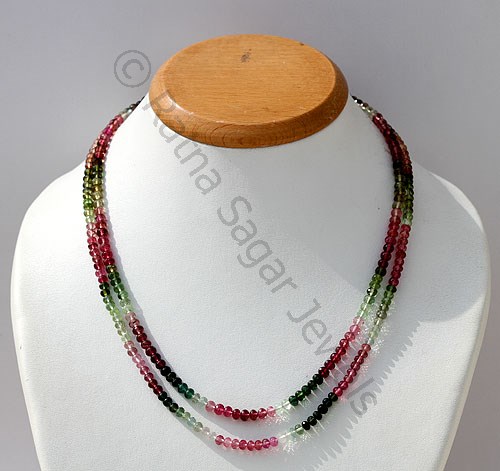Prayer beads and gemstones rosary are widely revered by the followers and practitioners of the different religions like Hinduism, Buddhism, Islam, Christianity, Sikhism and new spiritual movements. Beads are easily the oldest forms of prayer items that trace their origin to the Stone Age when they were made of bird’s bones, ostrich egg shells and seeds. With time, the beads and prayer rosaries have evolved and the sparkling gemstones feature in the commercial markets as one of the largest selling items.
The choice of the beads and prayer rosaries depend on the size of the gemstones, texture, strength and the overall weight.
Here are 5 lovely rosary gemstone designs that every devout follower can embrace.
1. Faceted Rondelle:
All ornamental stones can be cut and polished into faceted rondelle in such a way that the stones look neatly arranged and clean. Faceted Rondelle beads made of opal, jade, quartz, aquamarine and red garnets are commonly available in the size of 5 mm, 7.5 mm, 10 mm and 15 mm.

The ornamental stones are arranged in series of 2, 4, 8 and 16 so that they feel dense and matte. The stones are drilled at the center and strung together using glass fiber, golden thread, and platinum wires.
The cost of the faceted rondelle beads is decided on the number of beads strung together. The ideal number is usually set at 36, 72, 108 and 256 beads.
2. Faceted coins:
Mystic and alluring, the prayer beads shaped like pebbles are usually tagged as Faceted Coins. The faceted coin prayer beads are pressed together in such a way that the string passes underneath the surface. Gemstones like Lapis Lazuli, opal, labradorite, blue angelite, quartz, amethyst, serpentine, jade, garnet, and agate are pressed like faceted coins.
The best aspect of owning the faceted coin gemstones is that they can be engraved with hymns, images, and symbols representing the faith. The diameter of coin surface could be anywhere between 7.5 mm and 15 mm. The edges are smoothened to avoid bruising or cutting the skin surface.

3. Faceted Nugget:
Rough and unabashed, the faceted nugget gemstone beads are very popular. The size of the gemstones is usually between 15 mm and 45 mm. The multi-color Aquamarine, black agate, gray labradorite, larimar, amethyst, and quartz are arranged like nuggets. The faceted nuggets are strung together by drilling a hole in the middle.
4. Faceted cubes:
Faceted square cubes are the ravishing arrangement of transparent gemstones. The faceted cube gemstones are usually made of silica glass, moonstone, and sapphires. Red agate, peridot, and opal are also available in faceted cubes’ design.
They are usually set in odd numbers, in series of 25, 55, 115 and 175 beaded gemstones.
5. Faceted Marquise:
Designed like tear-drop briolette, faceted marquise gemstone beads are very popular among fashion designers. The beads can be designed like head-piece, ear-rings, bracelets, anklets and waistbands. Faceted marquise rosaries made of garnets, blue topaz, Ethiopian opals, green emeralds, Rose quartz, Lemon quartz and Tanzanite are considered as luxury designer items.
Save
Save
3d9ccef0-0c2b-4ceb-8bfa-6e31856373cf|0|.0|27604f05-86ad-47ef-9e05-950bb762570c
Tags
: Faceted Rondelle Beads . Faceted coins Gemstones . Faceted Nugget . Faceted cubes